By Susan Russick, Special Collections Conservator
Over the summer, University Library is undergoing a significant renovation of its entrance hallway. For visitors, this means a temporary detour and other mild interruptions — but for one signature painting, it has meant something much more complex.
Casual visitors know Oli Sihvonen’s 17-foot-long “Matrix” as “the big orange painting,” and it is used as a landmark within the library for finding the well-concealed elevators. Keeping it safe during renovation required special help from the Libraries’ Preservation department and a set of outside specialists.
Sihvonen, an American painter of Finnish descent, was active in the 1950s through the 1980s and has been collected by MoMA, the Art Institute of Chicago, the Whitney Museum and many other institutions. He studied with art educator Josef Albers at Black Mountain College in North Carolina, where Sihvonen met lifelong friends architect Buckminster Fuller, choreographer Merce Cunningham, poet Robert Creeley, and composer John Cage. His abstract works include a series of ellipse paintings similar to “Matrix.”
The monumental canvas was a gift commissioned by University Library’s architect, Walter Netsch, upon the building’s completion in 1970.

“Matrix” in the student lounge in the newly opened University Library, circa 1970. Northwestern University Archives.
“Matrix” is no stranger to the risks of public display. This 90-inch-high, 207-inch long painting had originally hung in the student lounge, but soon after had been inadvertently damaged. It was cleaned, re-stretched and moved to the current location to avoid further damage in 1973. The conservator who cleaned it was Louis Pomerantz, a father of the professional field of conservation in the United States. (Though Pomerantz’s papers are held by the Smithsonian’s Archives of American Art, they do not appear to include a treatment report for this painting.)
To protect “Matrix” during this period of renovation, Preservation determined it should be taken down from the wall and stored for the two-month project. Normally, Preservation’s role in a move like this would be minimal – the department regularly participates in handling, packing, and storing small paintings. But the oversized “Matrix” required an altogether different approach.
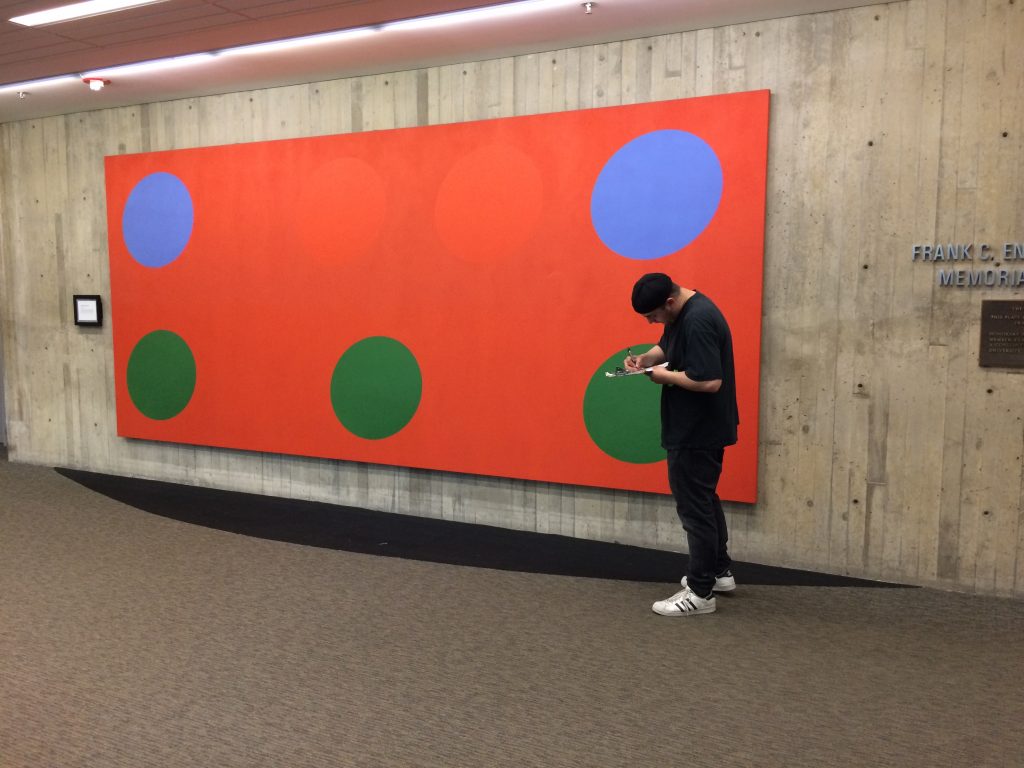
Terry Dowd, Inc., a licensed art transportation firm, was hired to pack and move the painting. Specialists began by measuring the painting, doors, and turning radii along the path to the storage location.
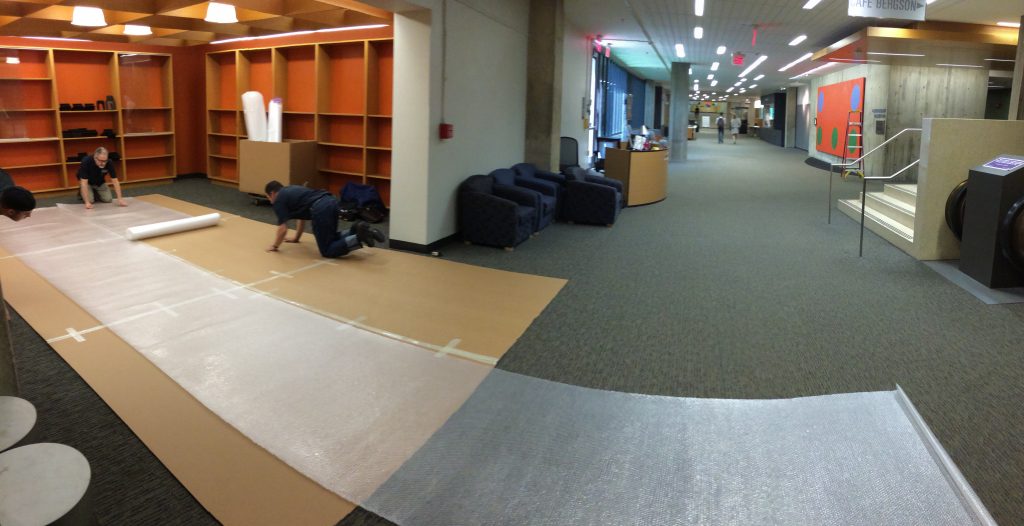
Cardboard and bubble wrap were laid out as two of the layers for the painting’s temporary packing during the construction project. An additional layer of poly wrap was placed next to the painting. Above, the painting is visible hanging on the right and didn’t have to move far to get (mostly) out of the main hallway and to the packing area.
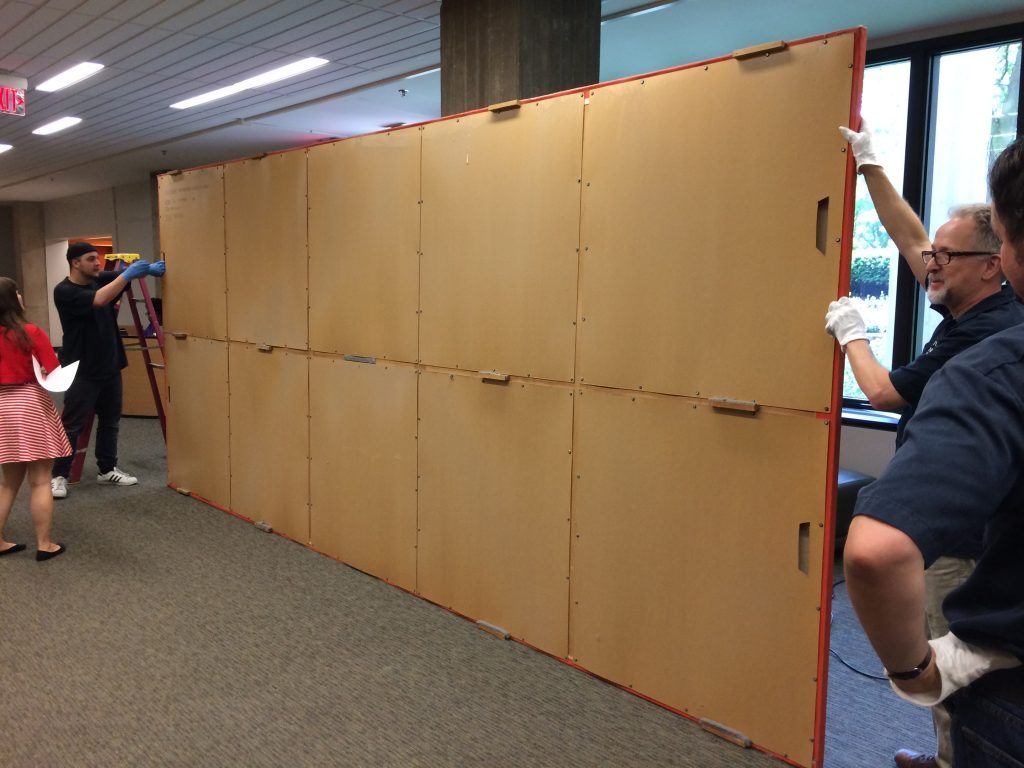
The painting was removed from the wall, revealing the back for the first time in years. We gave thanks to Louis Pomerantz, the 1973 conservator, for installing the backing boards with hand holds to ease the handling of this giant painting. Forty-four years of dust was sitting on the blocking boards, requiring a HEPA vacuum and a soft brush to remove dust before packing.
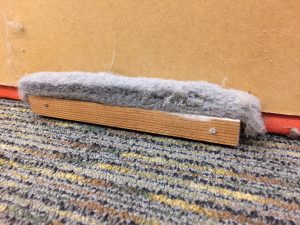

The painting was laid face down on the prepared packing materials and the poly wrap was secured over it. The poly wrap layer was taped in place, followed by the bubble wrap. Then the cardboard was folded and pieced around the back and taped in place. How many rolls of tape were used? Only about three or four.
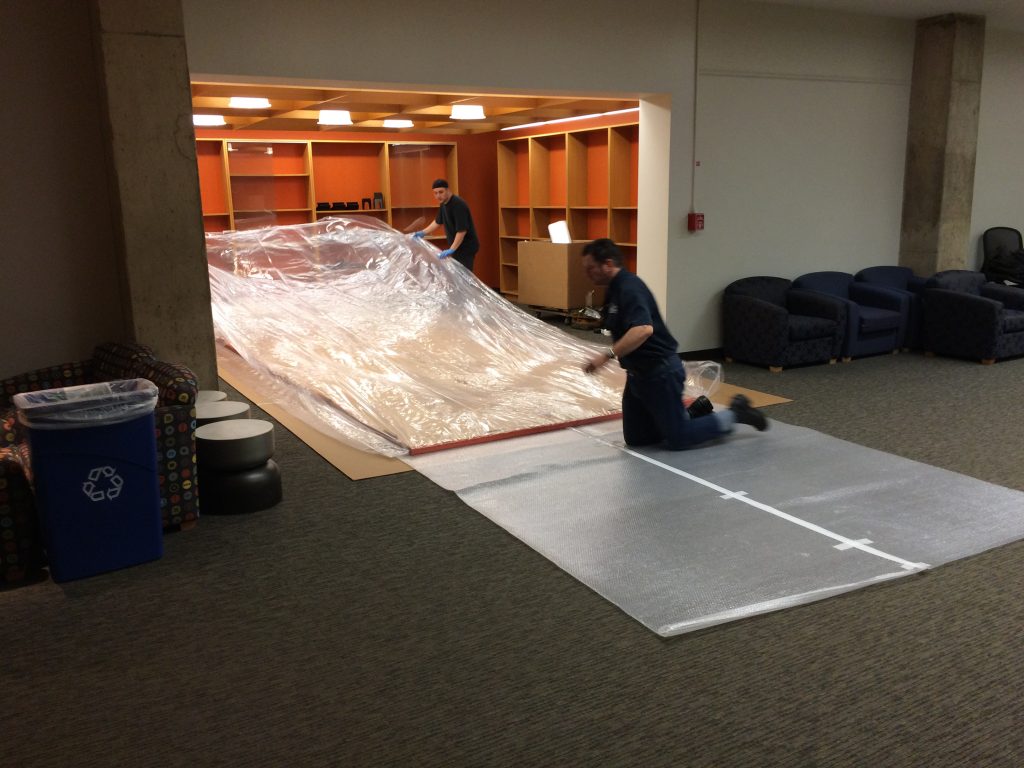
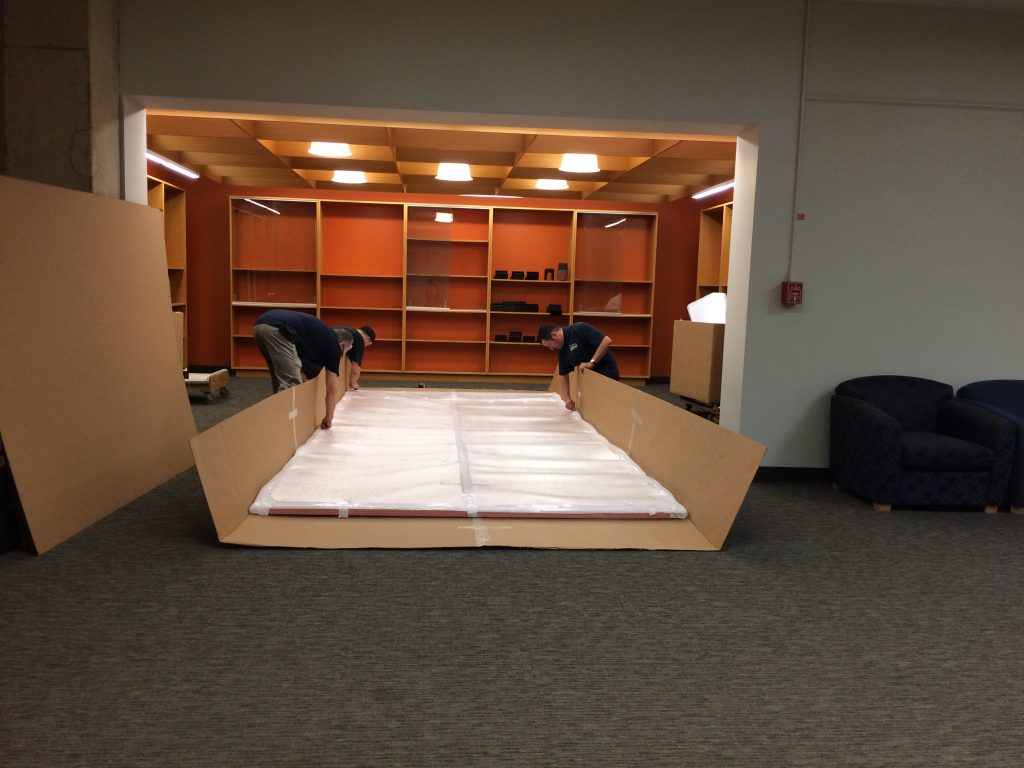
Once wrapped, the painting could be moved to its temporary storage area. The painting now has a cozy temporary home safely shielded behind some sturdy microfilm cases.
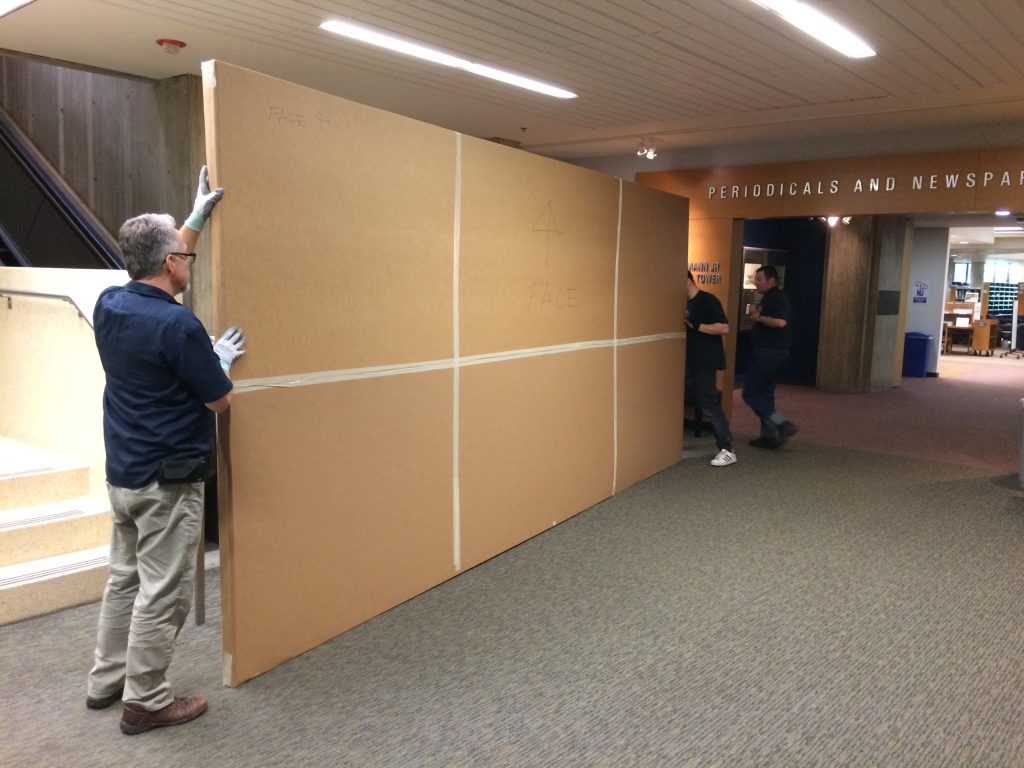
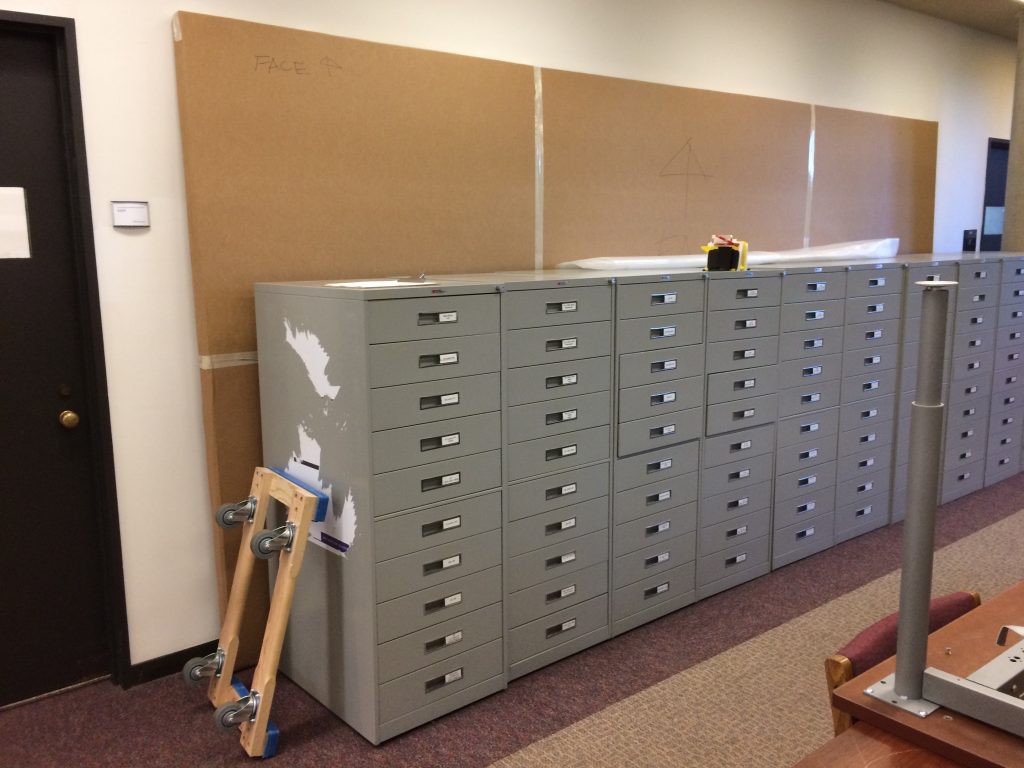
“Matrix” will return to the wall this fall where another generation of students can view it and contemplate the dissonance inherent in the vibrating color scheme and the near-eclipse of the two orange circles in different light due to subtle texture variations.
They can also just use it to find the elevators.
